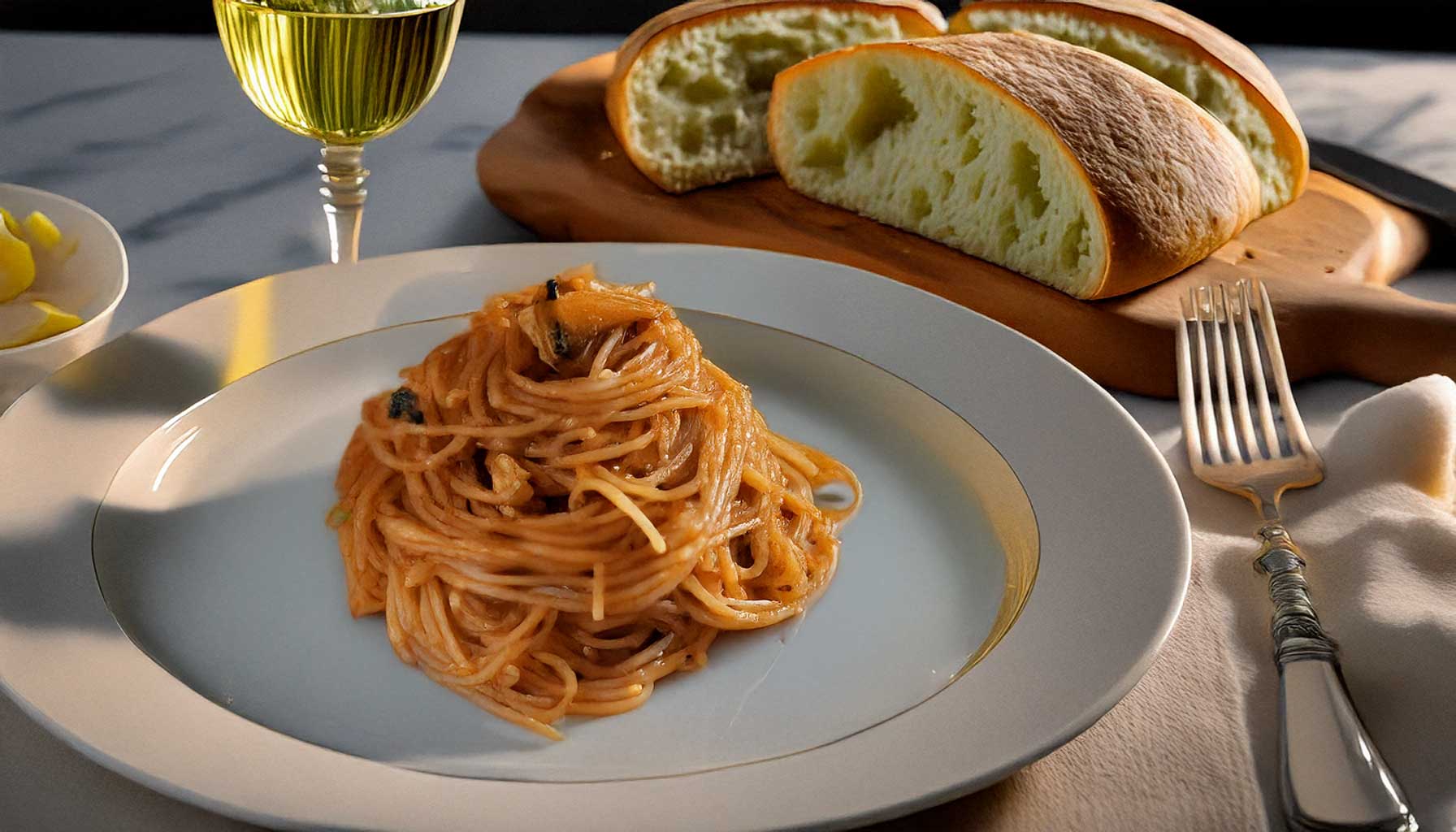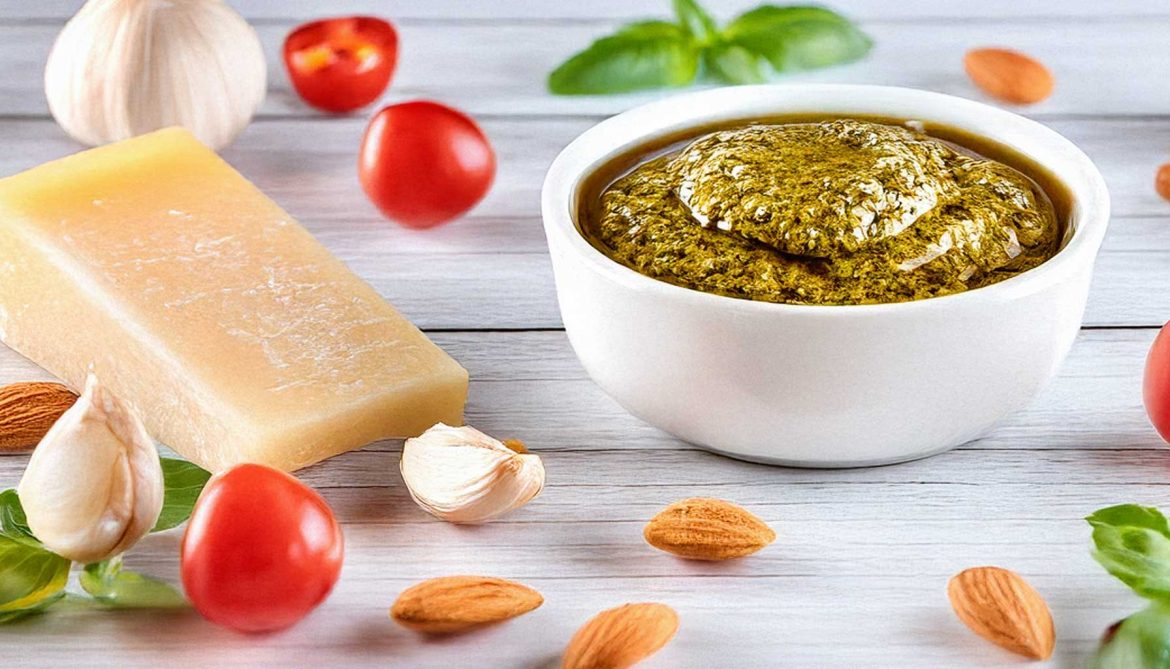Are you ready to explore a vibrant Sicilian specialty that’s full of sunshine, history, and flavor? Pesto alla Trapanese, also known as Trapani-style pesto, is a delightful variation of the classic Genoese pesto. With its origins in the sun-drenched western shores of Sicily, this dish brings together fresh ingredients to create a simple yet unforgettable taste.
Let’s take a closer look at what makes this pesto stand out, its history, and how you can bring a piece of Sicily to your own kitchen.
The Unique Charm of Pesto alla Trapanese
Unlike the more famous Pesto Genovese, which relies on the signature combination of basil, pine nuts, and Parmesan, Pesto alla Trapanese takes its own Mediterranean route. Its vibrant flavor comes from sun-ripened tomatoes, almonds, fresh basil, garlic, and Pecorino cheese. The result is a rustic, rich pesto with a slightly chunky texture that clings beautifully to pasta.
One of the standout features is its almond base. Almond trees thrive in Sicily’s warm climate, and their nuts are a local treasure. Roasting or blanching the almonds adds a deep nuttiness to the pesto, making it both earthy and luxurious.
A Brief Journey Through History
Pesto alla Trapanese is believed to have been influenced by sailors visiting Sicily’s bustling ports, particularly in Trapani. These travelers, often from Liguria, brought with them the idea of pesto. However, the Sicilians made it their own, using local ingredients to craft a recipe that reflected the region’s bountiful produce.
This culinary adaptation not only highlights the ingenuity of Sicilian cooking but also underscores the importance of fresh, local ingredients in Mediterranean cuisine.
Recipt : Pesto alla Trapanese
Fresh and Flavorful Trapani-Style Pesto
Nutrition
Equipment
- Food Processor
- Skillet
- Knife
- Large Pot For boiling pasta if serving with it
Ingredients
Main Ingredients
- 200 g cherry tomatoes washed and dried
- 100 g blanched almonds lightly toasted
- 2 cloves garlic peeled
- 50 g fresh basil leaves loosely packed
- 60 ml extra virgin olive oil
- 30 g Pecorino Romano cheese grated
- salt and pepper to taste
- red pepper flakes optional, for a spicy kick
Instructions
Preparation
- Wash and pat dry the cherry tomatoes and basil leaves. Grate the Pecorino Romano cheese. Toast the almonds lightly in a dry skillet over medium heat until golden brown. Set aside.
Making the Pesto
- In a food processor, combine the toasted almonds, garlic, and a pinch of salt. Pulse until the almonds are coarsely ground.
- Add the cherry tomatoes and basil leaves. Blend until the mixture starts to come together, keeping the texture slightly chunky.
- With the processor running, drizzle in the olive oil to emulsify the sauce. Add the grated Pecorino cheese and pulse a few more times to incorporate.
- Taste and adjust the seasoning with salt, black pepper, and red pepper flakes if using.
Serving the Pesto
- Toss the pesto with freshly cooked pasta, spreading it evenly. Garnish with extra Pecorino, basil, and a drizzle of olive oil. Serve immediately.
Tips and Variations
How to Serve Pesto alla Trapanese
Traditionally, Pesto alla Trapanese is served with a type of pasta called busiati, a corkscrew-shaped pasta that’s perfect for catching the chunky sauce. However, don’t feel limited—fusilli, spaghetti, or even gnocchi are great options too.
This pesto also makes an excellent accompaniment to crusty bread, grilled vegetables, or as a spread for sandwiches. Its versatility means it can shine as a quick weeknight dinner solution or a centerpiece for an elegant dinner party.
Tips for Elevating Your Pesto alla Trapanese
- Choose the Right Tomatoes: Ripe, flavorful tomatoes like cherry or Roma varieties work best. Their natural sweetness and acidity balance the richness of the almonds and cheese.
- Toast the Almonds: Lightly toasting the almonds before blending deepens their flavor and adds a warm nuttiness to the sauce.
- Use High-Quality Olive Oil: A good extra virgin olive oil enhances the sauce’s texture and brings out the best in the other ingredients.
- Experiment with Cheese: Pecorino is traditional, but you can mix it with a little Parmesan for a milder taste or use a vegan alternative for a dairy-free version.
Bringing Sicilian Sunshine to Your Kitchen
Making Pesto alla Trapanese at home is about more than following a recipe—it’s about embracing the spirit of Sicily. The ingredients are simple, but the result is anything but ordinary. The flavors transport you to a sunlit terrace overlooking the Mediterranean, where life feels slower and meals are savored with joy.
Have you ever tried this Sicilian classic? What’s your favorite way to serve it? Let’s talk in the comments—I’d love to hear your take!




